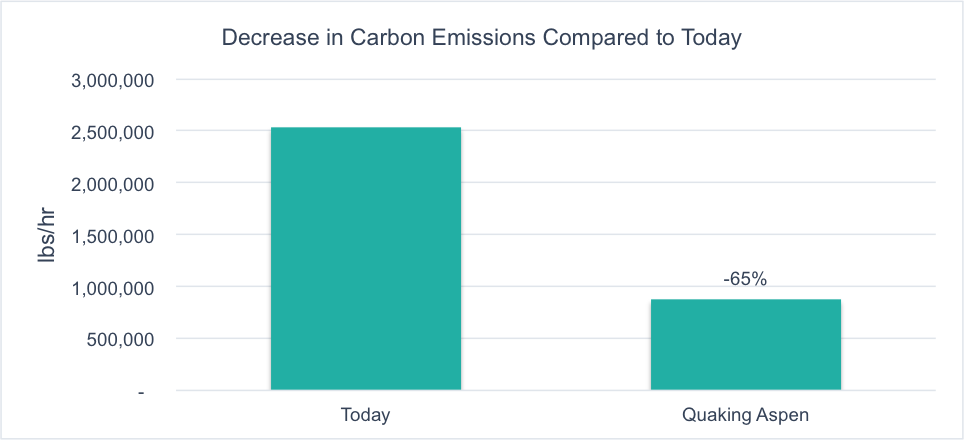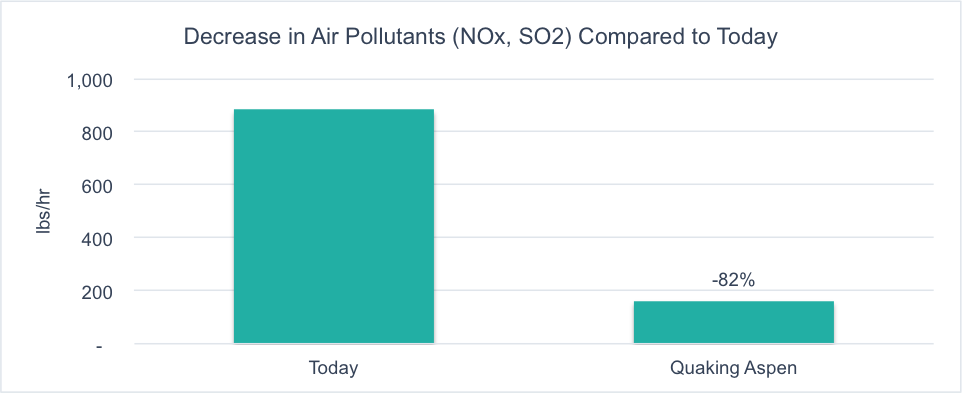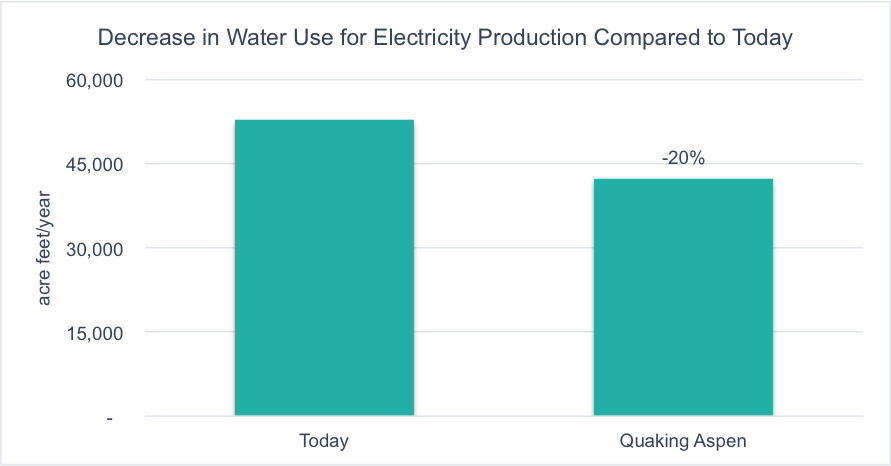The Story
By 2050, Utah is as self-reliant as possible and produces most of the energy that we consume. Renewable energy sources, nuclear power, and natural gas each produce about a third of our electricity. Because we produce energy locally and from a variety of sources, we are better able to withstand fluctuations in energy supply and cost. By 2050, Utahns are using 30% less electricity per person than they are today as a result of energy efficiency and conservation measures.
Results
- Household costs are slightly higher: 12% increase from what we pay today.
- 65% decrease in carbon dioxide emissions.
- 82% decrease in air pollutants such as NOx and SO2 (emissions occur outside Wasatch Front).
- 20% decrease in the amount of water used to produce electricity
- More diverse fuel sources makes Utah less susceptible to supply disruption and price spikes
- Transportation and storage of hazardous nuclear waste required
- Land needed for new power transmission line corridors
.png)




Background
Utah is an energy-rich state. We have reserves of natural gas and coal and potential for renewable energy supply from solar, wind, and geothermal energy. Utah’s total energy production in 2012 was approximately 1.14 trillion Btu. Because Utah produces more energy than it consumes, surplus energy is exported. In 2011, 31% of all energy produced in Utah was exported, including 27% of the state’s electricity. The Utah Office of Energy Development estimates that in 2013, the market value of Utah’s energy sources and renewable electricity was $5.3 billion.
Most Utah communities are customers of Rocky Mountain Power and receive their electricity from power generation facilities in several states. In 2009, residents, businesses, and industries used approximately 27,400 gigawatt hours of electricity. Currently, the price of residential electricity in Utah is among the lowest in the nation at about 10.72 cents per kilowatt hour (kWh). In comparison, the price for electricity is 17.05 cents/kWh in California and 19.46 cents/kWh in New York. Our comparatively low energy costs make us attractive to business and industry.
Today, most of Utah’s electricity is generated from coal-fired power plants, but Rocky Mountain Power is increasing the use of other energy sources like natural gas and renewables such as wind and solar. No coal-fired power plant has been built in Utah in the last quarter century. There are no plans to build any new coal-fired plants, and those that exist are planned to be retired. Fossil fuel-fired power plants are currently the largest source of carbon dioxide (CO2) emissions in the United States, accounting for 38% of U.S. total greenhouse gas emissions in 2013. Natural gas plants produce substantially less CO2 emissions than do coal plants.
The natural gas industry in Utah is growing, due in part to the electric power sector’s transition away from coal. Utah ranked tenth in the nation in natural gas production in 2012. Of the natural gas consumed in Utah in 2013, the residential sector used 35%, electric power generation used 25%, the commercial sector used 21%, and the industrial sector used 19%. Only 0.2% of natural gas consumed was used as fuel for vehicles. The price of natural gas in Utah remains low compared to the rest of the nation with residential natural gas costing an average of $8.55/thousand cubic feet in 2013.
As Utah’s population doubles, our energy needs will increase. Despite our many energy resources, Utah will likely use significantly more natural gas for electricity, for space and water heating in homes and commercial buildings, and for industrial uses.


